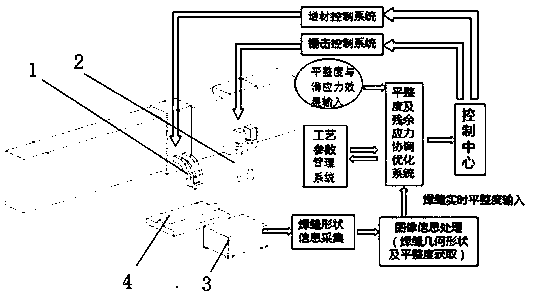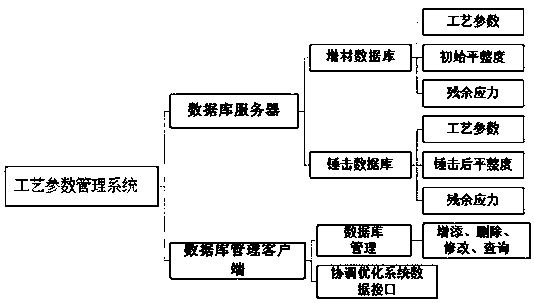Self-feedback control method and system for coordinated optimization of laminated material flatness and residual stress
A residual stress, coordination and optimization technology, applied in the field of additive manufacturing, can solve the problems of non-compliance of welds and the quality of additive products, and achieve the effect of avoiding non-compliance with requirements
- Summary
- Abstract
- Description
- Claims
- Application Information
AI Technical Summary
Problems solved by technology
Method used
Image
Examples
Embodiment Construction
[0036] In the prior art, it is desired to obtain a smaller initial flatness when adding materials. The present invention does the opposite, adopting a larger initial flatness to ensure that the weld seam produces sufficient plastic elongation deformation after the contact impact to offset the uncoordinated strain. Therefore, the greater flatness after material addition is of great help to the subsequent hammering work. At the same time, consider the flatness after hammering to ensure that the shape and flatness of the weld after contact impact also need to meet the standard.
[0037] A self-feedback control method for coordinating and optimizing the flatness and residual stress of lumber, comprising the following steps:
[0038] According to the historical data of the additive process and the hammering process, the following correspondence is established:
[0039]The relationship between the flatness of the weld and the residual stress is used to obtain the corresponding res...
PUM
 Login to View More
Login to View More Abstract
Description
Claims
Application Information
 Login to View More
Login to View More - R&D
- Intellectual Property
- Life Sciences
- Materials
- Tech Scout
- Unparalleled Data Quality
- Higher Quality Content
- 60% Fewer Hallucinations
Browse by: Latest US Patents, China's latest patents, Technical Efficacy Thesaurus, Application Domain, Technology Topic, Popular Technical Reports.
© 2025 PatSnap. All rights reserved.Legal|Privacy policy|Modern Slavery Act Transparency Statement|Sitemap|About US| Contact US: help@patsnap.com


